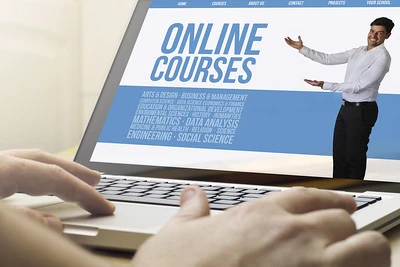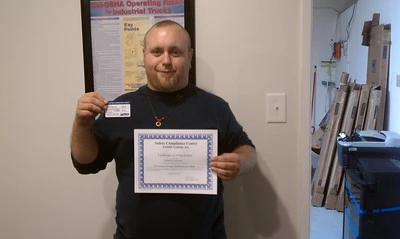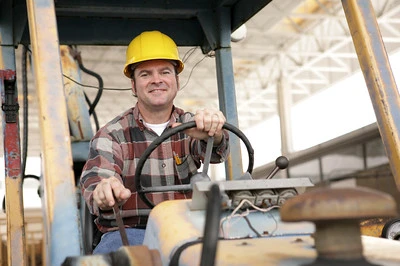Can You Use My Forklift License Anywhere? (No, Why?)
April 12, 2024 | by onlineoshasafetytraining.com


That’s correct, a forklift license typically cannot be universally used everywhere due to varying local regulations and employer standards. Here are a few key points to consider:
Different Areas, Different Rules
Different places have their own rules about operating forklifts. What’s okay in one place might not be in another. It’s important to know these rules to operate a forklift safely and legally.
Example: U.S. vs Europe
- United States: In the U.S., forklift drivers must follow rules set by OSHA. OSHA requires that you must be at least 18 years old and have proper training and certification to drive a forklift.
- Europe: In Europe, the rules can be stricter. For example, the UK has specific laws like LOLER (Lifting Operations and Lifting Equipment Regulations) and PUWER (Provision and Use of Work Equipment Regulations). These laws make sure that all equipment is safe and that operators are well-trained.
By understanding these differences, you can make sure you’re always following the right steps to operate a forklift safely, no matter where you are.
It Depends on the Employer’s Requirements
Different Employers, Different Standards
Every employer may have their own set of safety rules for operating forklifts. Even if two companies are in the same city, one might have stricter rules than the other. This is because they might prioritize different safety practices or use different types of forklifts.
Need for Additional Training
Even if you already have a forklift license, some employers might ask you to go through more training. For example, if your previous job had you operating a standard forklift, but your new job requires you to operate a reach truck or a pallet jack, they may want you to learn how to safely use these specific types. Additionally, if the company has had safety issues in the past, they might introduce extra training sessions to avoid future problems.
Understanding each employer’s specific requirements is key. It ensures you are always prepared and qualified according to their standards, helping maintain safety at the workplace.
If You Will Be Working in Another Country:
License Validity in Other Countries
When you go to another country, your forklift license from home might not work there. Every country has its own rules about who can operate a forklift and how.
Getting Certified Locally
If you want to work with forklifts in a new country, you’ll probably need to get a new license there. This means you’ll have to take training courses and tests according to that country’s rules. For example, if you move from the U.S. to Australia, you might need to get an LF or LO license, depending on the type of forklift you’ll be using.
It’s important to look into the specific requirements of the country where you plan to work. Getting the right certification not only keeps you legal but also safe while on the job.
To ensure compliance and maintain safety standards, it’s important for forklift operators to check the specific requirements of their employers and the local regulations of the areas in which they plan to work.
If You Are Going To Work Somewhere, You Might Need to Retake the Training
Why You Might Need New Training

When you start a new job at a different place, the rules about operating a forklift might not be the same as what you’re used to. This is because each place has its own safety regulations and the types of forklifts they use might be different, too. For example, driving a counterbalance forklift isn’t the same as operating a reach truck, which can lift loads up to 40 feet high—much higher than typical warehouse forklifts.
What It Means to Get a New License
Getting a new forklift license usually means you have to go through training again. This training could be about how to safely move loads or how to operate new kinds of machinery. Even if you have been driving forklifts for years, you might need to learn new skills, like using updated safety equipment or following the latest health and safety guidelines, which could include new OSHA (Occupational Safety and Health Administration) standards if you’re in the U.S.
The training typically involves both practical and written tests. For example, you might need to show that you can lift and move a load weighing up to 5,000 pounds to a height of 20 feet using a specific forklift model. These details are crucial to make sure that when you’re licensed, you can handle the specific demands of your new workplace safely.
By understanding these requirements and ensuring you meet them, you’ll be ready and safe to start your new job operating forklifts.
Every Industry or Workplaces Has Its Own Set of Rules
Every industry or workplace, like warehouses, construction sites, mines, and ports, has its own set of rules. Here’s a simple breakdown of what this means:
Different Workplaces, Different Rules
Each type of workplace operates differently and faces unique challenges and risks. Therefore, each one develops its own safety rules and guidelines to make sure everyone stays safe while working.

Warehouses:
- Safety in Stacking: Warehouses have rules about how high items can be stacked and how to secure them to prevent accidents.
- Forklift Operation: There are specific pathways and speed limits set for forklifts to avoid collisions.
Construction Sites:
- Protective Gear: Workers are required to wear helmets, safety boots, and other protective gear at all times.
- Machinery Use: There are strict guidelines on who can operate heavy machinery like cranes and forklifts, often needing special training and licenses.
Mines:
- Ventilation Systems: Mines must have powerful ventilation systems to prevent the buildup of dangerous gases.
- Emergency Procedures: Strict emergency procedures are in place due to the high risks of cave-ins and other accidents.
Ports:
- Load Handling: Ports have specific rules for handling and storing different types of cargo to prevent accidents and ensure smooth operations.
- Equipment Maintenance: Regular maintenance of cranes and lifting equipment is mandatory to ensure safety.
Importance of Following Rules
In each of these environments, following the specific safety rules is crucial. These rules help prevent accidents and injuries, making sure everyone can go home safely at the end of the day. Training and staying informed about these rules are key responsibilities for all workers and managers.
If You Are Going To Work in Australia, You Need to Have High-Risk Work License
Why You Need a High-Risk Work License
In Australia, driving a forklift is considered high-risk work because it can be dangerous. The High-Risk Work License shows that you have the right training to do this job safely. It tells your boss and coworkers that you know how to handle a forklift without causing accidents.
Steps to Get the License
- Find a Training Course:
- Look for a course at a training center that is approved by the government. This course will teach you how to safely drive and manage a forklift. It usually lasts about two to three days.
- Take the Training Course:
- During the course, you will learn through both classroom lessons and hands-on practice. You might practice lifting loads as heavy as 2,500 kg (about 5,500 lbs) and moving them to different areas like shelves that are 5 meters high.
- Pass the Assessment:
- At the end of your training, you will have a test. This test has two parts: a written part and a practical part. The written test will ask you questions about safety rules and how to operate a forklift. The practical test will have you actually operate a forklift to show that you can do it safely.
- Apply for Your License:
- After passing the test, you apply for your High-Risk Work License. You’ll need to fill out some forms and pay a fee. You also need to provide a passport-sized photo of yourself.
- Receive Your License:
- Once your application is approved, you’ll get your license in the mail. This might take a few weeks. Your license will be valid for five years, after which you’ll need to renew it.
What to Remember
- Always keep learning and practicing safe forklift driving. Even after you get your license, it’s important to stay updated on new safety rules and techniques.
- Make sure your license is always valid. If it’s about to expire, renew it so you can keep working without any problems.
By following these steps, you’ll be well on your way to safely and legally operating a forklift in Australia, and you’ll help keep your workplace safe for everyone.
If You’re Going to Work in the UK as a Forklift Operator
Why You Need Retraining
If you’re planning to work as a forklift operator in the UK, you’ll need to take some retraining. This is important because it helps make sure that you know how to operate a forklift safely according to the UK’s specific rules.
Steps for Retraining
- Find a Training Course:
- Look for a training course that meets the UK standards. These courses are usually offered by approved training centers and focus on what’s needed for UK work settings.
- Take the Training Course:
- The training course will have lessons in a classroom and practice with a forklift. You will learn the right ways to lift and move items, and how to keep safe while working.
- Get Certified:
- After finishing the course, you’ll need to pass a test. This test will check if you understand everything about safely operating a forklift. It includes both writing answers and showing how you can handle a forklift.
- Receive Your Certification:
- When you pass the test, you’ll get a certificate. This certificate proves you have the latest training and are ready to work as a forklift operator in the UK.
What to Remember
- Keep your skills up to date. Rules and safe ways to work can change, so it’s important to keep learning.
- Make sure your certificate is always current. If it’s going to expire, you might need to take a refresher course to renew it.
Retraining for forklift operation in the UK is not just about following the law; it’s about making sure you and everyone around you stay safe while you work.
To Make a Conclusion
In summary, you can’t always use your forklift license everywhere you go. Each place has its own rules and might require different training. If you’re planning to work in a new area or with a new employer, it’s important to check if your current license is accepted there. You might need to get additional training or a new license based on local regulations. Always make sure your certification is up to date to ensure you can work safely and legally wherever you are.
RELATED POSTS
View all


